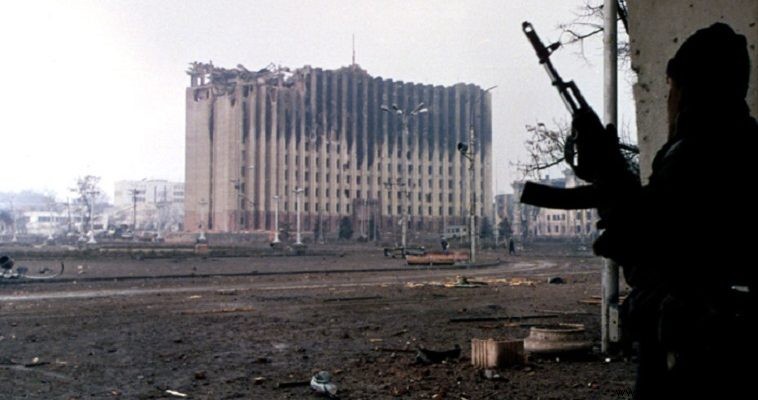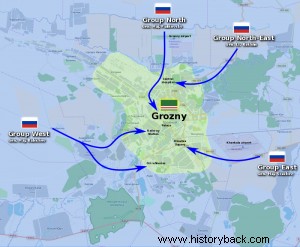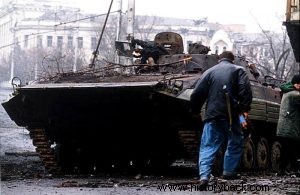
The two military conflicts in Chechnya left their mark on recent Russian history. In 1994-95 Russian forces captured the Chechen capital of Grozny, driving out fanatical Islamist rebels and installing a strong garrison.
In 1996, however, things were to turn upside down. This year the Russian leadership gave up trying to find a solution through talks with the Chechen Islamists and launched new attacks.
On July 20, 1996, the Russians launched a large-scale operation in the southern Chechen highlands, withdrawing forces from Grozny. On August 6, another 1,500 men were withdrawn from the capital to carry out an operation in a neighboring village. On the same day the Islamists attacked the city.
Jihadist attack
The Russians, despite the withdrawal of forces, still maintained about 12,000 around and in the city and for this they were not particularly worried. About 7,000 men were deployed inside the city, mainly members of the paramilitary security forces.
On August 6, the Chechens marched. Although its leader Aslan Maskadov had at most 3,000 men, having an excellent knowledge of the city, he managed to avoid the Russian strongholds, using infiltration tactics.
Their main targets were the city's military and civilian airports, the command headquarters of the Russian forces, the headquarters of the Russian FSB and GRU services and communications centers. The Chechens managed to infiltrate with minimal losses (47 men) and effectively take control of the city within just three hours starting at 05.50 in the morning.
Instead of attacking the Russian outposts, police stations and other strong points they simply isolated them, trapped the approaches to them so that neither the blockaded could get out nor any reinforcements could easily reach them and waited for the surrender of the Russians from hunger and thirst.
Russian sources, on August 9, reported that 7,000 Russians were trapped in the city . The largest enclave was in the area of government buildings in the city center where the Russian FSB security service is headquartered. Chechnya's pro-Russian government fled to Kankala military airport in the suburbs.
In the meantime, the Islamists began their work, mainly persecuting Chechen collaborators of the Russians. Many were summarily executed.
Boosts and attacks
In the first week of the Islamic occupation of the city, other Islamists flocked to bring their total to 7,000 men. On the Russian side, on August 7, the 205th Motorized Rifle Brigade arrived in the city to help the trapped Russian forces.
In the meantime the Islamists had taken over the railway station killing over 300 Russians and seizing a huge number of portable anti-tank launchers, which they put to good use.
On 8 August 900 men of the Russian 276th Motorized Rifle Regiment attempted to advance towards the city center but failed miserably. The regiment lost almost half of the men it engaged.
Only an armored Russian phalanx managed to penetrate the city and supply some support points. Several similar infiltrations were attempted over the next five days but casualties were heavy. 18 tanks, another 69 armored vehicles and 23 trucks and vehicles were lost, while three Russian helicopters were also shot down.
On August 19, the Russians issued an ultimatum demanding the withdrawal of the Islamists from the city within 48 hours. Otherwise they threatened a general attack. The Russian ultimatum spread panic among the civilian population trapped there – some 300,000 souls.
However, the Russians started bombarding the city with artillery and air force from August 20. At least one hospital was hit by the bombing, as well as convoys of civilians. About 220,000 civilians fled the city. About 50-70,000 civilians remained in Grozny. The Russians did not allow many children and men over the age of 11 to leave as they were considered suspicious.
Diplomatic solution
Finally, the solution was found through diplomacy. Russian general Lebed started talks with the Islamist Maskadov which resulted, on August 30, in the signing of a peace agreement on the basis of which the First Chechen War ended. While in November 1996 the then Russian president Yeltsin agreed to compensate Chechnya for the disasters that had been caused.
The battle of Grozny was lost along with Russian prestige and morale. Officially the Russians admitted losses of 2,100 dead, wounded and missing and the destruction of 18 tanks, 69 armored vehicles and three helicopters. They also admitted the death of approximately 2,000 civilians. Rebel casualties were not disclosed.

The Russian attack on Grozny in 1994-95.

Damaged Russian armored vehicle in Grozny.
